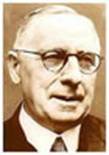
South Australian Medical Heritage Society Inc
Website for the Virtual Museum
Home
Coming meetings
Past meetings
About the Society
Main Galleries
Medicine
Surgery
Anaesthesia
X-rays
Hospitals,other organisations
Individuals of note
Small Galleries
Ethnic medicine
- Aboriginal
- Chinese
- Mediterran
The Royal Flying Doctor Service
As early as 1912, a dream brought about the uniting of Medicine, Aviation and Radio in a partnership that would assist the pioneers of the remote Australian outback. The Reverend John Flynn (Australian Inland Missionary), Clifford Peel (Medical Student) and Alfred Traeger (See chapter on Alfred Herman Traeger) exchanged their knowledge to develop a visionary medical service to aid the well being of people living in remote areas of this vast continent.
In 1928 their vision was realised when the first 'Aerial Medical Service' flight left Cloncurry for Mt.Isa to pick up and return a injured youth. The service commenced using a single-engine De Haviland 50 named “Victory” chartered from The Queensland and Northern Territory Air Service (QANTAS) from their base at Cloncurry Queensland .
In 1942 the service was renamed the Flying Doctor Service and after a Royal visit in 1955 the Queen approved the Royal prefix. An extension of the Royal Flying Doctor Service has been the School of the Air. Established in Alice Springs in 1951, radio classes provided correspondence lessons for isolated children.
The RFDS is now a world-renowned aero-medical organisation providing emergency retrieval from rural and remote Australian regions, it also provides a primary health care service to remote outback Australia and a hospital to hospital transfer service. The service now exists for all people who live, work and travel in outback areas.
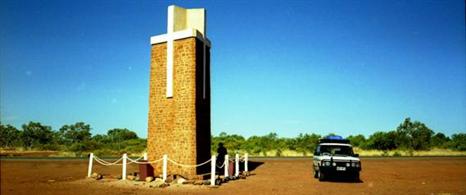 The John Flynn Memorial at the junction of the Stuart and Berkley Highways just north of Tennant Creek
The John Flynn Memorial at the junction of the Stuart and Berkley Highways just north of Tennant Creek
In the 1930s and 1940s The RFDS used British aircraft made - mostly by De Havilland like the DH-50, DH-83 Fox Moth, the DH-84 Dragon, the DH-104 Dove and the Australian built Drover. These were powered by “Gypsy” 6 cylinder in line air-cooled engines, sometimes inverted to enable the propeller to clear the ground.
Later, American aircraft were purchased including the Beechcraft Baron, Travelair, Queen-Air and Duke, the Cessna 180, 182 and 421B, the Piper Cherokee, Chieftain and Navajo. These were powered by Lycoming flat opposed 4 or 6 cylinder air-cooled engines some models were turbocharged.
Since the 1980s the RFDS has been using Beechcraft Kingair 200C's, B200C's and C90s, Cessna Conquest, C425, and Conquest II. The newest types of aeroplanes to be included in the RFDS fleet are Pilatus PC12s and Cessna Titan 404s.
Aircraft developments have seen great changes. Prior to the mid 1980s, RFDS aircraft were all piston engines. The introduction of the twin engined Kingair B200Cs in the late 1980s and the Pilatus PC12s in the mid 1990s show the great benefits of turbo prop aircraft.
Until the 1960s, the Service rarely owned aircraft, using contractors to provide aircraft, pilots and servicing. The RFDS progressively began to purchase aircraft and employ their own pilots and engineers. Most of the original aeroplanes have been sold, but a few are preserved in the “Stockmans Hall of Fame” Longreach and in the QANTAS museum at Concurry. The following illustrations of early aircraft types used by the RFDS are not necessarily RFDS aircraft.
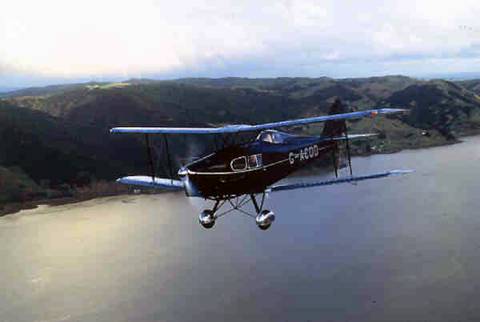
Later De Haviland Fox Moth.
Early models had an open cockpit
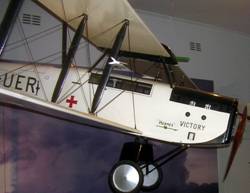
Model of “Victory”, a De Haviland 50 the first aeroplane used in the Flying Doctor Service.
The passenger cabin with the nurse and patient is between the wings ahead and below the open cockpit
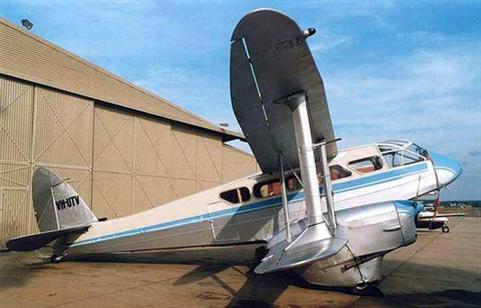 A De Haviland Rapide photographed at Sydney Bankstown Airport
A De Haviland Rapide photographed at Sydney Bankstown Airport

A De Haviland Drover A 3 “Gypsy” engined monoplane. The author flew in one to Wedge Island in 1972, but it was condemned the following week. The cockpit is designed for only 1 pilot
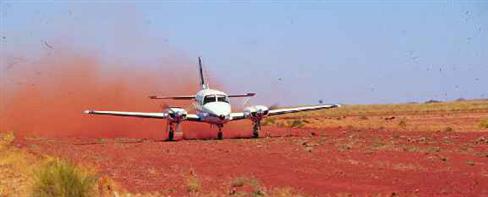
RFDS Piper Navajo Landing in the Pilbara of WA
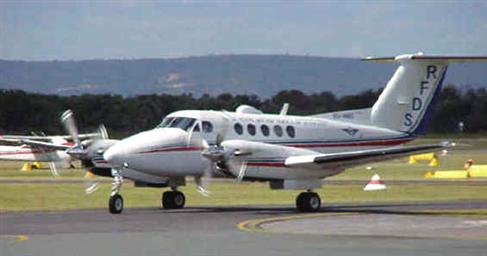 RFDS Beechcraft King-Air B200SE at Jandakot Airport, Perth
RFDS Beechcraft King-Air B200SE at Jandakot Airport, Perth 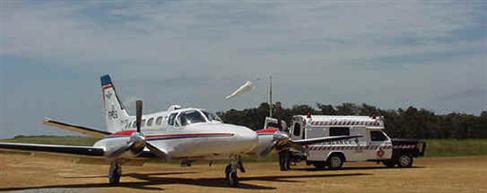
RFDS Cessna Conquest
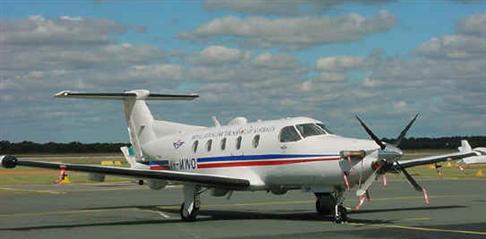
Pilatus PC12 single engine turbo prop pressurised aeroplane, Jandakot Airport, WA
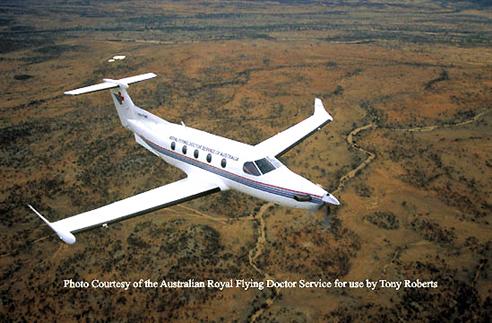
An RFDS Pilatus PC 12 flying over outback Australia
In the late 1980's and early 1990's, the time of selection, there were not many choices of aircraft to fulfill the requirements of the RFDS. The choices available at the time included the Cessna Caravan, the Beechcraft King-Air The Swiss made Pilatus PC12 was selected although it was still at a concept stage and was yet to be flown. It was required to replace the small twin engine ageing Piper Chieftains that were no longer available. The willingness of Pilatus to look at the type of work and environment the RFDS operated in, assisted with the final choice of the PC12. It has a single turbine engine driving a variable pitch propeller, developing a great deal of power, enabling short take offs. It is pressurized and can fly in the stratosphere above the weather.
All the PC12's where flown out from Switzerland by crews from the RFDS Central Section ( South Australia and the Northern Territory ). VH-FMC & VH-FMF are stationed at the Adelaide Airport . VH-FMP & VH-FMW are stationed at the Alice Springs Airport . VH-FMZ & VH-FDE are stationed at the Port Augusta Airport .
When the Service first began, the responsibilities of the Flying Doctor were to fly to urgent cases, render first aid and, if necessary, transport the patient to hospital; give advice by radio; fly a regular clinic circuit to areas without doctors and consult with rural and remote doctors. This is still the main function of the service. However with improvements in technology, telephones are used more frequently than radios and increasingly the Service is taking advantage of video-conferencing technology.
A Flying Doctor Base was established in Adelaide in 1987, mainly concerned with the transfer of patients from remote areas to the main Adelaide Hospitals. The Base at Port Augusta was established in 1955. It has a radio communications station covering the remote areas of Northern South Australia . However with the extension of the telephone system this is now used more for communication with the mobile transceivers installed in the vehicles engaged in mineral search, 4 WD explorers, and Tourists.
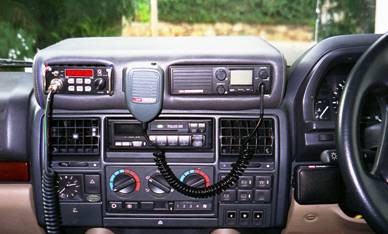
A Flying Doctor frequency (q mac) radio installed in a Range Rover. This high frequency radio is top left with the speaker to the left of the steering wheel. The radio top right is a C,B. UHF transceiver, used to communicate with other vehicles.
However the extension of the mobile net, and the hard-wired telephone service, together with the use of satellite phones may ultimately make this HF radio service redundant.
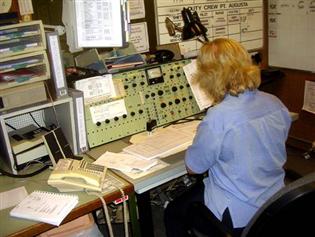 The RFDS radio base Port Augusta
The RFDS radio base Port Augusta
The following photographs of the RFDS Base and Museum at Broken Hill were kindly provided by Mat Seelinger.
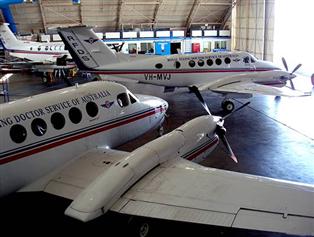 Beechcraft Super King-Air RFDS Aircraft in the hangar at Broken Hill Base.
Beechcraft Super King-Air RFDS Aircraft in the hangar at Broken Hill Base.

A static display of a restored “Australian Government Factory” “Nomad” which was previously used by the RFDS Broken Hill.
Now follow a series of old “Traeger” Flying Doctor radio transceivers preserved in the Broken Hill RFDS Museum . They show the transition from pedal powered units to 6 volt accumulator power by a vibrator, to a mains driven set. Traeger never built radios using transistors, a role taken over by “Codan” (See also article on Traeger).
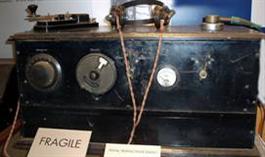
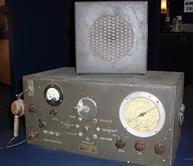 Original Traeger Morse Code Pedal Radio Early Post War “Vibrator” Radio.
Original Traeger Morse Code Pedal Radio Early Post War “Vibrator” Radio.
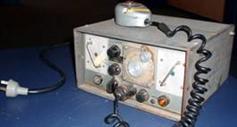
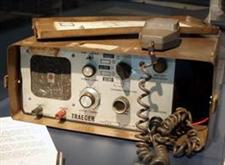 More recent Traeger mains driven valve radio transceivers.
More recent Traeger mains driven valve radio transceivers.
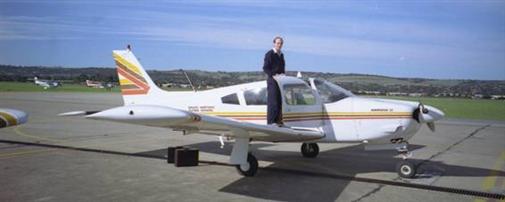 A doctor’s privately owned piper arrow at Adelaide ’s Parafield Airport.
A doctor’s privately owned piper arrow at Adelaide ’s Parafield Airport.
Except perhaps in the very early days of the RFDS the aeroplanes were not piloted by doctors but by commercial pilots. Although doctors are flown to some emergency patients and to remote localities to conduct clinics, the main service performed by the RFDS is the rapid transfer of seriously ill or injured patients to the major hospitals.
However in recent years there has been a group of doctors with private pilot’s licenses with no association with the RFDS, who have owned or hired aeroplanes to fly themselves to clinics or operating lists in distant country hospitals.
The development of reliable totally enclosed light aircraft by Cessna, Piper, and Beechcraft, in America, have made this hobby a practical proposition. And the country towns now have a serviceable airstrip or aerodrome.
